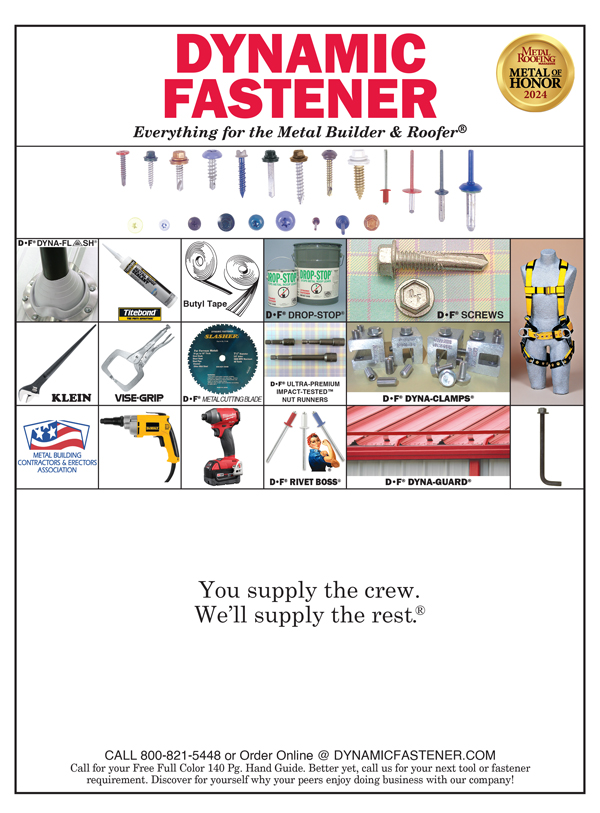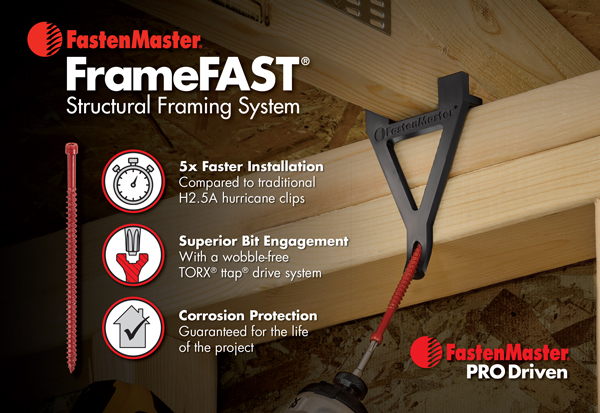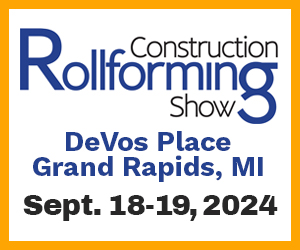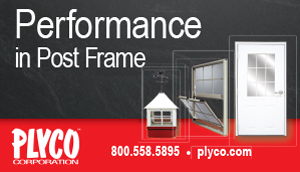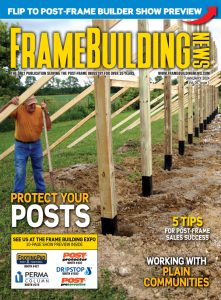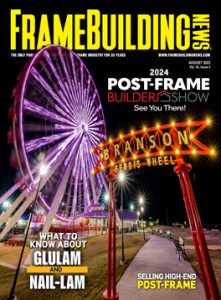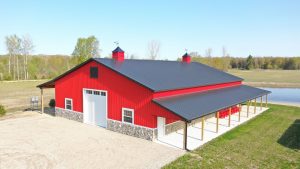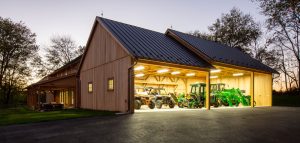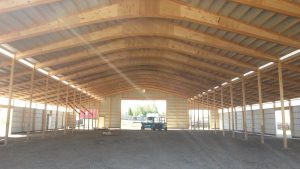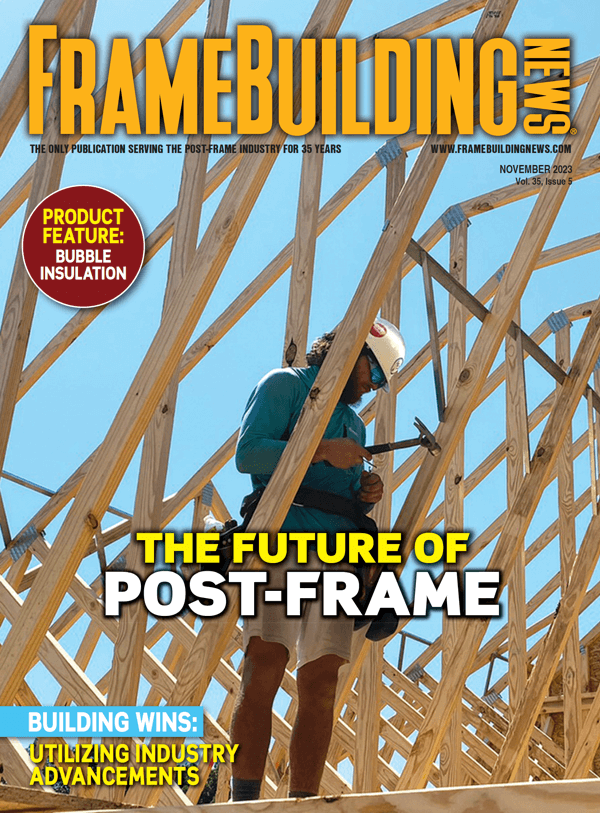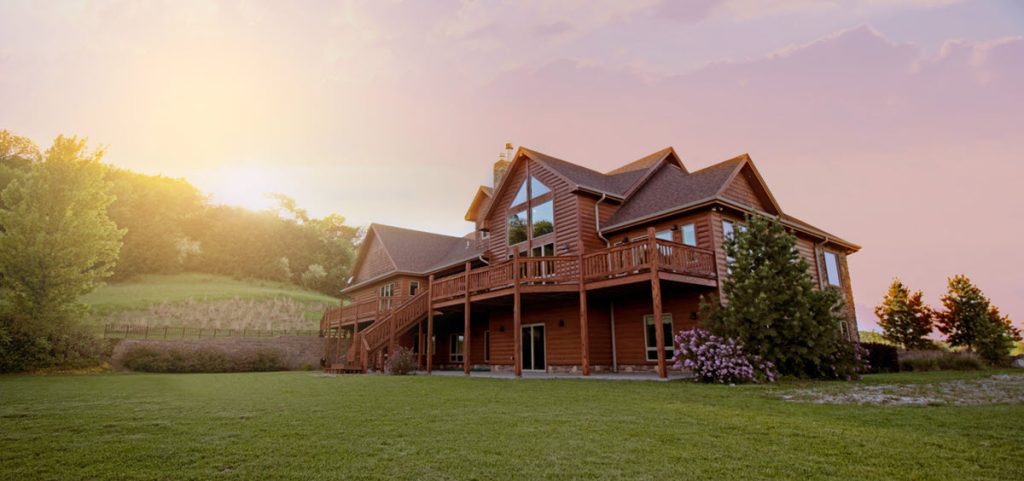
Barndos Are the Headliner. What Else Can We Expect?
Almost everybody in the post-frame industry agrees that the primary opportunity in future of post-frame is barndominiums. The biggest question remaining seems to be “is there anything else we might miss if barndos are the only thing we rely on?”
We spoke to several longtime post-frame experts and there aren’t many derivative storylines in post-frame besides 1) barndos and 2) the general construction environment, including the economy and interest rates.
We’ll touch on the latter for a bit, then we’ll (again) talk about barndos, and then we’re going to try to unearth some other trends.
Mortgage Rates
When talking about the future of any construction industry, you have to start with interest rates. From the National Association of Home Builders in September:
Persistently high mortgage rates above 7% continue to erode builder confidence, as sentiment levels have dropped below the key break-even measure of 50 for the first time in five months.
Builder confidence in the market for newly built single-family homes in September fell five points to 45, according to the NAHB/Wells Fargo Housing Market Index (HMI) released today. This follows a six-point drop in August.
“The two-month decline in builder sentiment coincides with when mortgage rates jumped above 7% and significantly eroded buyer purchasing power,” said NAHB Chairman Alicia Huey, a custom home builder and developer from Birmingham, Ala. “And on the supply-side front, builders continue to grapple with shortages of construction workers, buildable lots and distribution transformers, which is further adding to housing affordability woes. Insurance cost and availability is also a growing concern for the housing sector.”
Longtime industry veteran Josh Nowlin of the National Frame Building Association Board of Directors said mortgage rates and higher costs across the board are starting to have an impact, but only very recently.
“There has been a bit of a slowing over the last couple of months,” Nowlin said. “Everything is more expensive. You’re paying more to go out to eat. You’re paying more for fast food. You’re paying more for gasoline. You’re paying more for insurance. And all those incentives that were put in place during COVID are expiring.
“Bundle all those things together and people like are wondering, ‘Is now the right time to build that shop?’ Or, ‘Is now the right time to sell our home and potentially buy a new home and go from 3 1/2% to 6 or 7%?’ So I think the slowing has begun.”
The industry can’t control much of that situation. Let’s discuss what we can control.
Barndos Still Red-Hot
The fact that there might be a slowdown of some consequence in the construction industry has been expected for a couple years now. Within post-frame, will increased market share make up the difference? It would certainly appear so if you’re an enthusiast of the barndominium craze.
“You can be getting a haircut, and they ask what you do, and in the small talk, you say you build pole barns, or post buildings, and they’ll say, ‘Oh, you mean barndominiums?’” Nowlin said. “Even my teenage daughter brought up something about wanting to have a barndominium.
“Now, often when you say ‘barndominium’ people don’t understand what that really means. I think the general public just knows it’s that farmhouse-type look. They don’t know that it’s post-frame.”
Keith Dietzen of SmartBuild Systems has been creating construction software for decades and can detail the history of post-frame; we’ll save that for another time. Using his historical experience, he said numerous trends play into a bright future for post-frame, especially because of barndos.
Today’s technology, including SmartBuild’s new software that allows for interior barndominium plans to take hours versus days, allows builders “to build these structures very quickly. Further, with post-frame, because of the lengths created between the posts, and the widths available then of the cavities created by these bigger posts, you can increase the insulation widths and values. I can make a very energy efficient structure to boot.”
Put together the three primary attributes of barndos — open floor plans, energy efficiency, and affordability if you want to quickly create a residential building — and “this led right into our barndominium phenomenon,” Dietzen said. “[Post-frame marketing] reads like an HGTV pitch, which is very, very effective. Now I can have this shell built in a small fraction of the time it would take me to get a custom home built.
“I can build it without even paying for a concrete floor, and when I can afford it, then I’ll go for my concrete floor. I can DIY the inside myself if I want. Those won’t be load-bearing walls, so I don’t have to worry about building the whole thing at once. I can have the contractor build maybe one partition wall on the inside and I’ll use it today for my storage.”
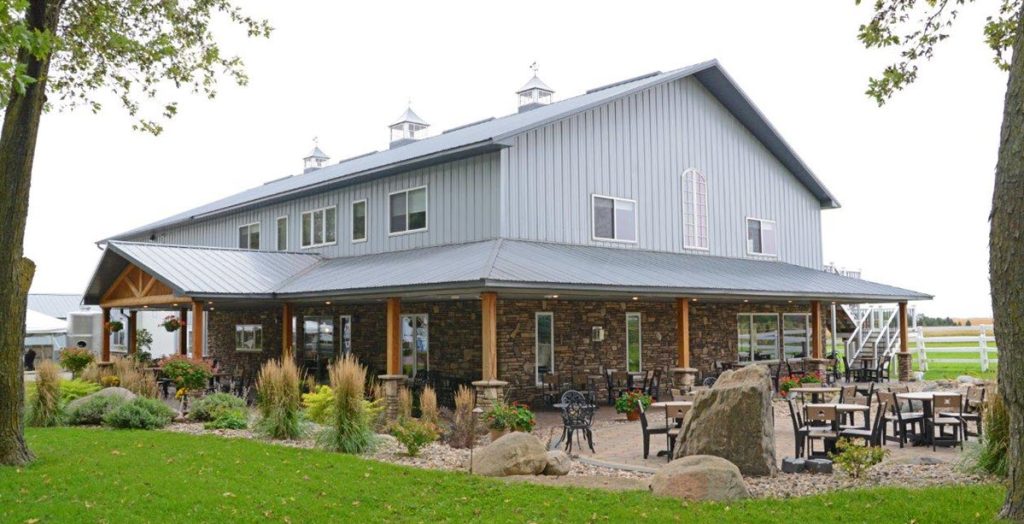
Marketing Barndos
Are we getting better as an industry in marketing post-frame via barndos and those attributes mentioned above?
Mark Stover of Perma-Column said builders like those in the company’s Pro Builder program are spreading the word out on the front lines. That includes well-known post-frame enthusiast Kyle Stumpenhorst of RR Buildings, among others. “They’re doing a great job marketing the product, but they also make money with it,” Stover said.
The other proof in the pudding is the marketing for barndominiums that’s happening across the internet, in particular on Facebook. “Some of these architectural firms that are throwing barndominium plans out there for $500 or $1,500,” Stover said. “There are social media clubs and it’s happening organically. It’s creating that collective awareness.”
As a quick aside, Stover said regardless of any other trends, their company is gaining market share as builders and consumers alike realize that their product solves a problem. “Our precast concrete posts are doing extremely well,” he said. “The industry is moving away from wood being in the ground, and our builders will use a good/better/best strategy. “Future post-frame customers look at that and wonder why anybody would put wood underground; now they may consider post-frame buildings.”
Everybody interviewed agreed that one message that post-frame can utilize is that it can be marketed as affordable. “Post-frame has always been marketed as an easier, lower-cost method of construction,” Nowlin said, citing just one example. “You can use you know any type of exterior cladding.”
Tom Granitz, National Sales Marketing Manager for Plyco, agreed that post-frame can benefit from being available at the lower end of the market during lean times. “The post-frame buyer is often different than somebody who wants to buy a three-bedroom, two-bath house in the suburbs,” Granitz said. “Post-frame is often rural and may even be a second home, or it might be for your kids when they visit. So it tends to be on the affordable side.”
Stover said there is growth opportunity as architects and engineers learn about these opportunities. There can also be a more unified effort as the big post-frame manufacturing companies work more together.
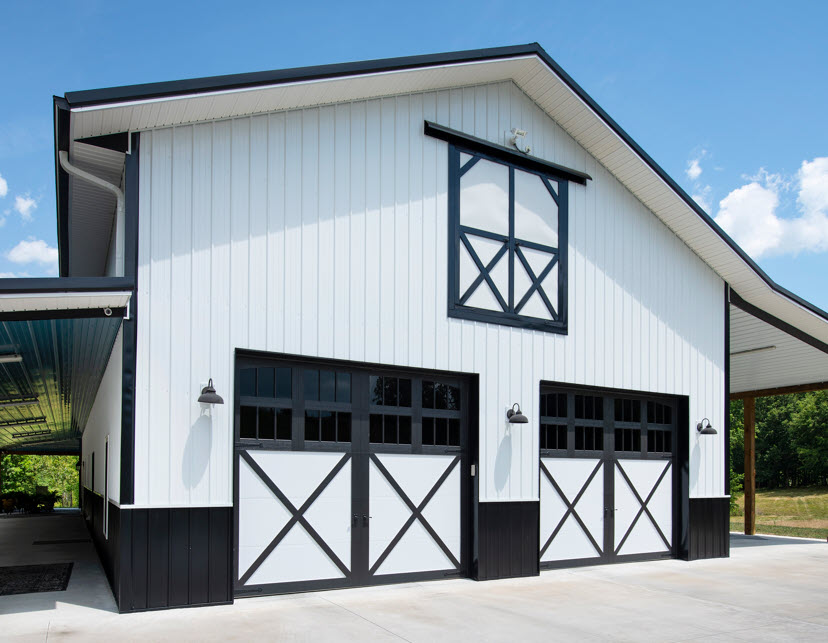
Trends Beyond Barndos
Barry Hoffman of Planet Saver Industries, an in-ground-post protection company, helps builders and manufacturers nationwide, in all business types. Because of that perspective, we asked him if he is seeing trends above and beyond the obvious in post-frame. “Over the last 12 to 18 months, we are seeing a tremendous increase in barndominiums, administration buildings, fire stations, and retail businesses,” Hoffman said.
He said there seem to be a couple prominent factors in all sectors: 1) price, because post-frame construction can be more affordable than other methods of creating a large-span building of these sizes, and 2) marketing, in that the industry seems to be getting better at making people aware of the features and benefits. “People are getting more educated to the features and benefits of post-frame construction across the board,” he said.
What is causing the increase in administration and government buildings? “I can’t give you an absolute, single reason,” Hoffman said. “I think it falls to the fact that people are getting more educated to the post-frame construction opportunities. We’re seeing buildings that you can’t even imagine, by looking at them, that they would be post-frame.”
Granitz agreed that residential has been impacted while agricultural has been doing well, and commercial has been stable. “As you hear from the news, the residential side certainly gets impacted more by interest rates and the access to loans,” Granitz said.
Granitz said one trend that Plyco is seeing across the board, not just in post-frame, is that consumers want choices and customized options. Meanwhile they still want speed to market — fast delivery. Those two don’t really go hand-in-hand for manufacturers.
“We’re known for having a lot of products for our customers, and on short lead times, but they’re wanting even more options,” including colors, thresholds, and more,” he said. “The end user wants something unique and different but there’s a time frame associated with the ability to build that. So the tug of war for us is trying to marry those two — shortening lead times while having options for our customers. We know that we’re going to continue to increase the options in our product line.”
The Biggest Challenge
Hoffman and his team see a lot of posts in their role of adding adding their in-ground protection. He said post-frame is going to have a challenge in the future if the industry doesn’t immediately take a hard look at some of the timber it’s using. “We’re seeing rot and decay occurring much sooner than ever experienced in the history of our industry,” he said. “We’re seeing stuff that’s coming through that has the treatment missing unlike anything we’ve ever experienced in history.”
That will not play well over time because post-frame is trying to be an option that is both affordable and long-term. But some of today’s posts are not grown for long-term stability.
“We have old-growth timbers mixed in with these faster growing timbers,” Hoffman said. “Old-growth timbers that have the standard growth rings on a three-ply 2’x6′, which is a laminated post that’s 4 1/16″ by 5 1/4″, we used to have between 80 and 90 growth rings. On some of these newer timbers, we’re helping less than 30. I have builders seeing rotting and decay starting to occur after eight or nine years, and that’s about when the faster-growing timbers were introduced to us in the industry.” FBN
This article is from the November 2023 edition. Click here to read more articles from that magazine.


